How This ‘Most Dangerous’ African Tribe Cleverly Fools Tourists
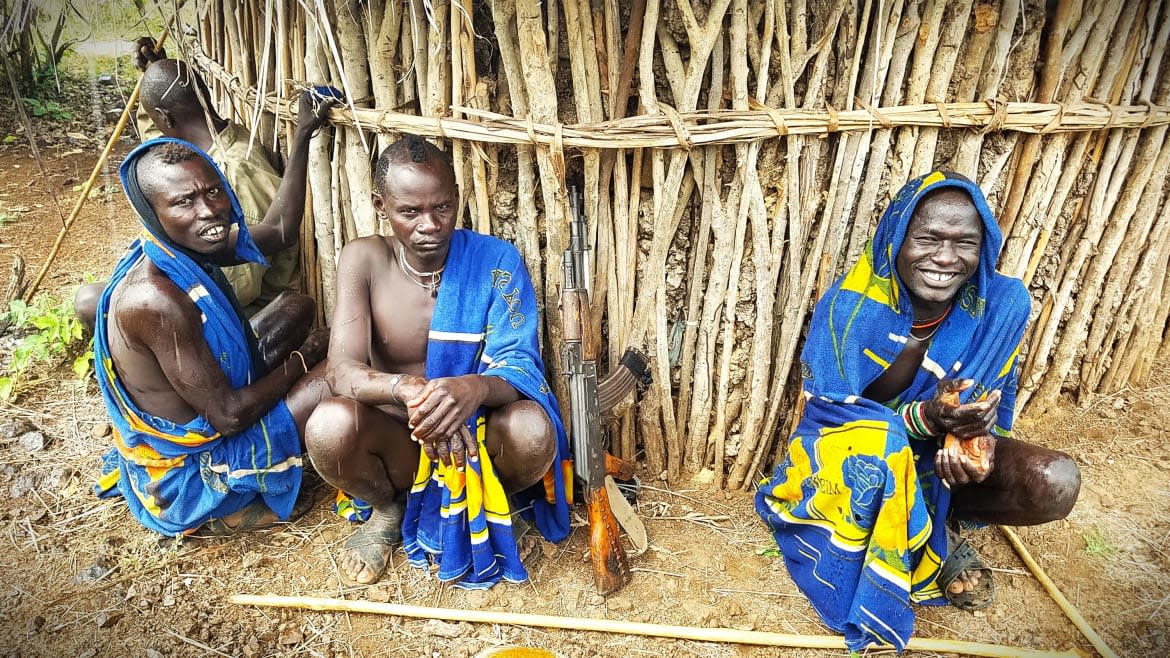
When the rainy season finishes, a few tourists head into the south of Ethiopia, close to the borders with Kenya and South Sudan. They’re searching for one of the last African tribes that pierce and gauge their lips with large decorative plates. These people are called the Mursi, and for years a handful of the most popular travel magazines photographed them adorning gorgeous lip plates, cattle horns, sticks and bones, berries and leaves, and other foliage.
The tourists want to see in real life what they have grown up seeing on the covers of these magazines. So they make the journey. From the occasional traveler to the seasoned travel photographer, all of these visitors arrive with the same tour companies that operate several hours away in the nearest city, ready to take eager, camera-wielding tourists to catch a glimpse and interact with the Mursi.
Unbeknownst to most visitors it’s a bit of an embellished show. The Mursi know what the tourists want, and I’m not sure what the tourists really want is the truth.
The Mursi live in southwest Ethiopia in the Debub Omo Zone of the Southern Nations, Nationalities, and People’s Region (SMMPR), a regional state near the border with South Sudan. As semi-nomadic pastoralists, the Mursi regularly move around this region wherever water sources are most beneficial for the thousands of cattle they harvest throughout the year.
This can put the Mursi at odds with other semi-nomadic groups in southern Ethiopia, sometimes resulting in violent conflict as water sources are scarce, especially during seasonal droughts. The Mursi stay armed, and because many of their male leaders regularly carry AK-47s to fend off wild hyenas, boars, or cattle thieves, they are often hyperbolically referred to as “the most dangerous tribe in East Africa.”
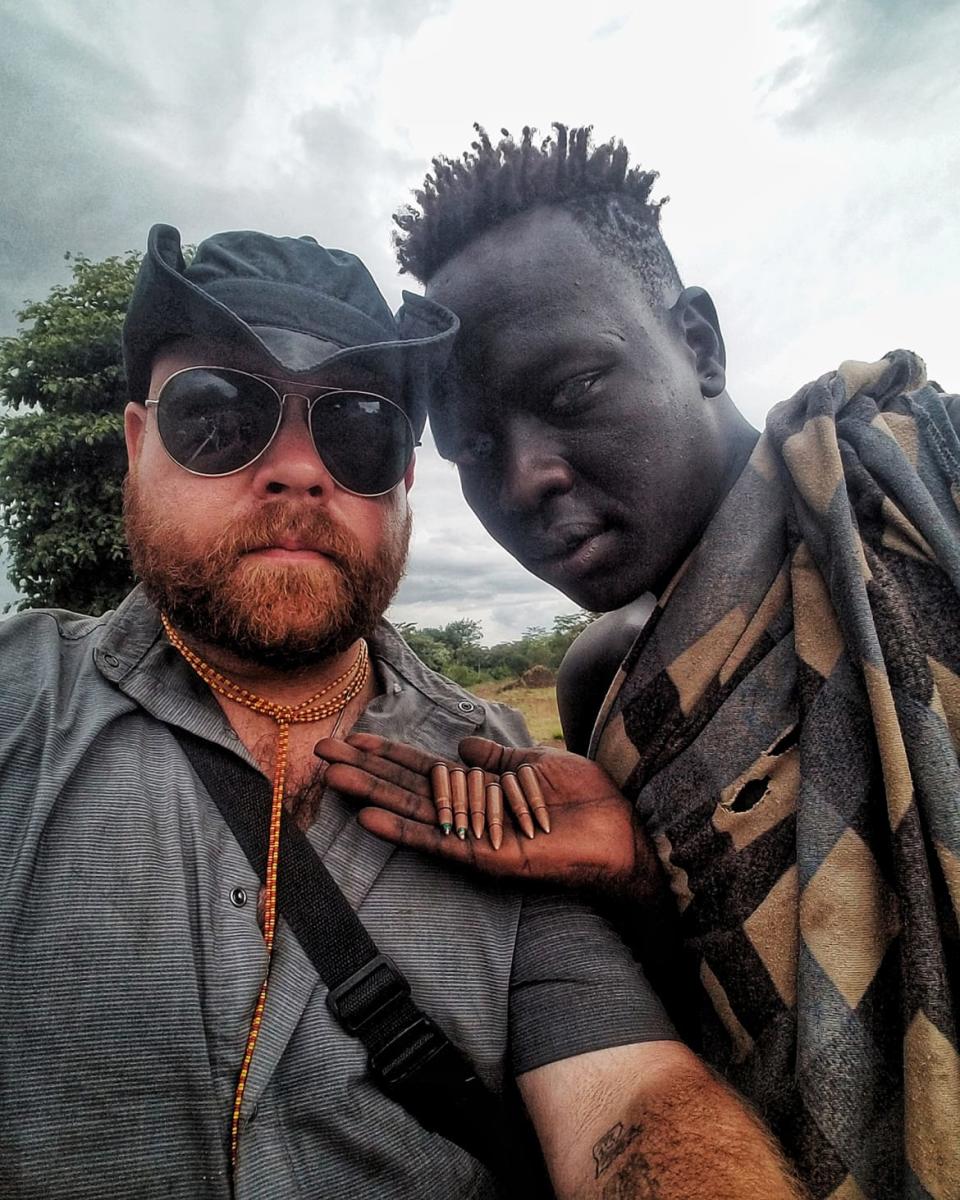
A Mursi warrior shows a handful of ammunition.
Of the 45 distinct ethnic groups that live in this region, the Mursi (along with the Surma people) are visually distinct, recognized by large lip plates worn by the women of the tribe. And while the Mursi live in a very remote and often inaccessible part of the country, this visual alone is enough to attract many camera-wielding tourists to their territory each year.
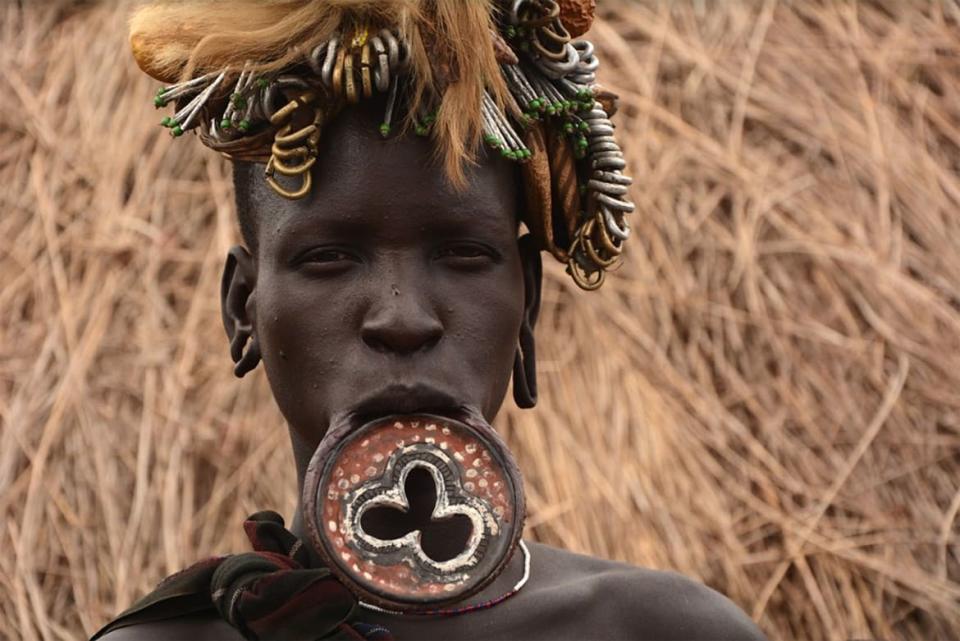
A Mursi woman wearing a traditional lip plate.
The journey to the Mursi can be incredibly difficult. Visitors must first fly to Addis Ababa, the capital of Ethiopia, then take a domestic flight south to one of the only two villages with an airport. From there, and only if conditions are amenable, they must acquire an off-road vehicle and a guide to drive five to eight hours further south, deep into the wilderness where roads are inhospitable, if they haven’t been washed away completely by the previous season’s intense rainfall.
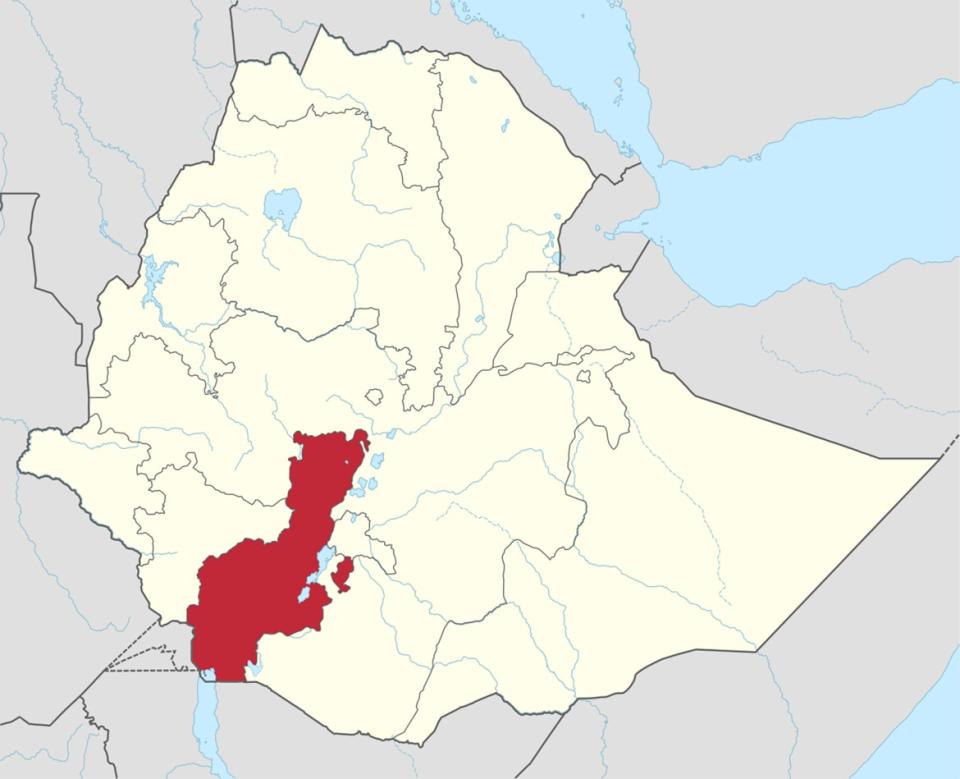
Map of Ethiopia showing Southern Nations, Nationalities, and People's Region.
I’ve made this trip several times with my friend and colleague, Ben Dome, a photojournalist from the U.K. But unlike most tourists who visit the Mursi only once in their lifetime, we continue to return, having formed close friendships with several members of the tribe. Over the years we have been invited back to live for extended periods with them, which we have always gratefully accepted.
I’ve hunted with the men in the tribe, and slept in tents next to their huts. I’ve drank their moonshine, or araqi, by the fireside, and have attended funerals for their family members. I’ve shared with them Western music, while they have taught me their own songs, stories, and sports. The men often take part in donga fighting, where they swing long, swift, blunt-force bo staffs (called donga sticks) in competitive sport. Matches are held at various times throughout the year, and many young men spend their time training to secure their title, unseat a champion, and attract eligible Mursi women.
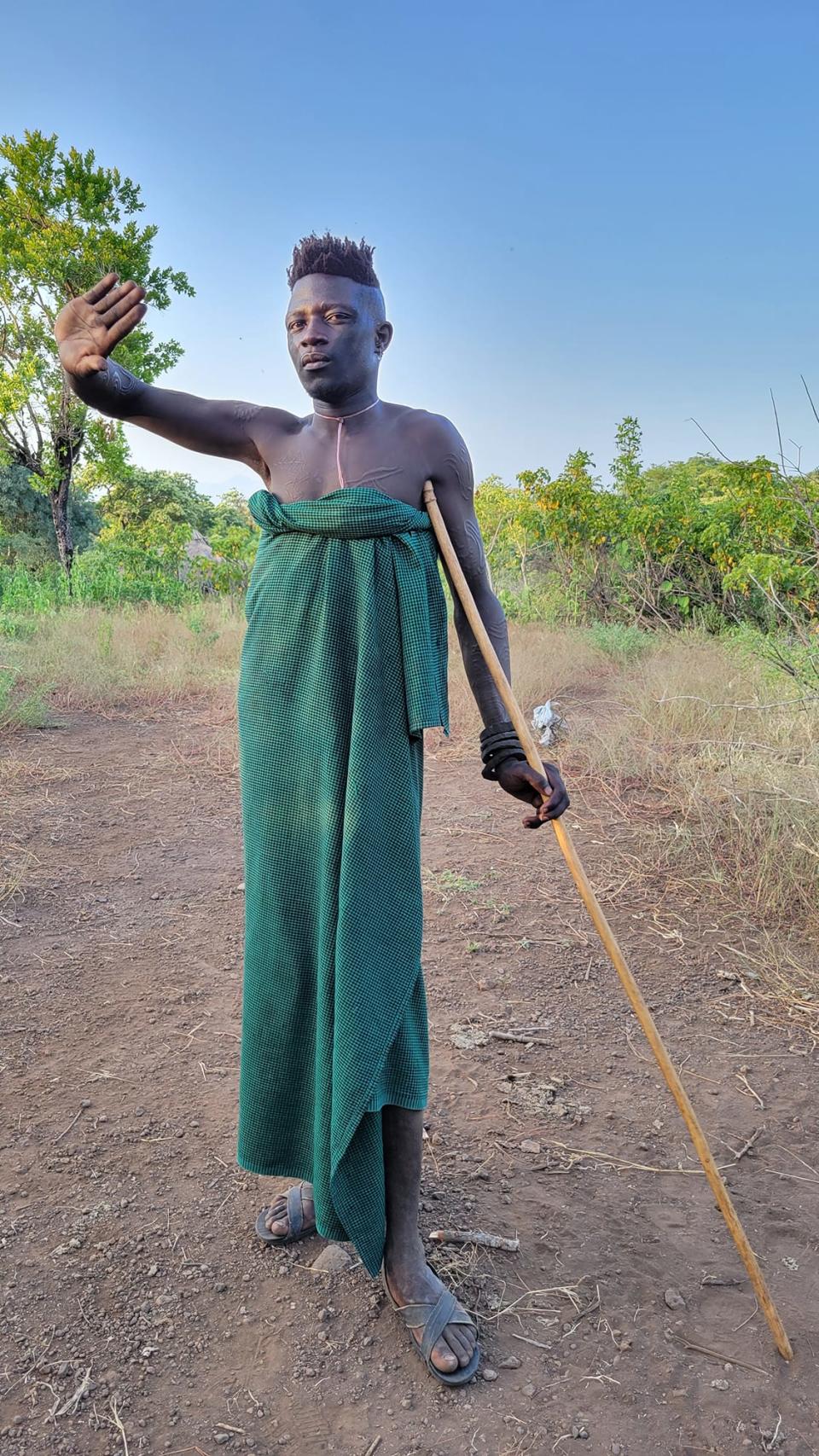
A young Mursi donga fighter poses for a portrait.
All the interactions I’ve had with the Mursi over the years have been nothing short of fascinating. But one of the most interesting things I’ve found is how they are treated and perceived by the dozens of tourists who come to see them.
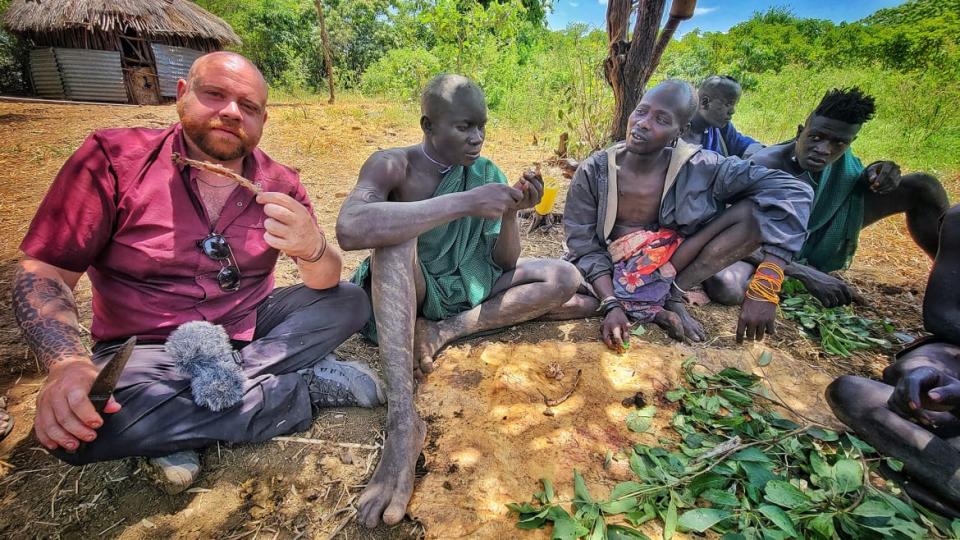
Jody Ray sitting amongst elder Mursi tribesmen eating goat.
The Mursi cleverly keep permanent Potemkin villages along the main road where they know tourists will eventually arrive, eagerly wanting photos of women adorning massive lip plates and gauged earrings.
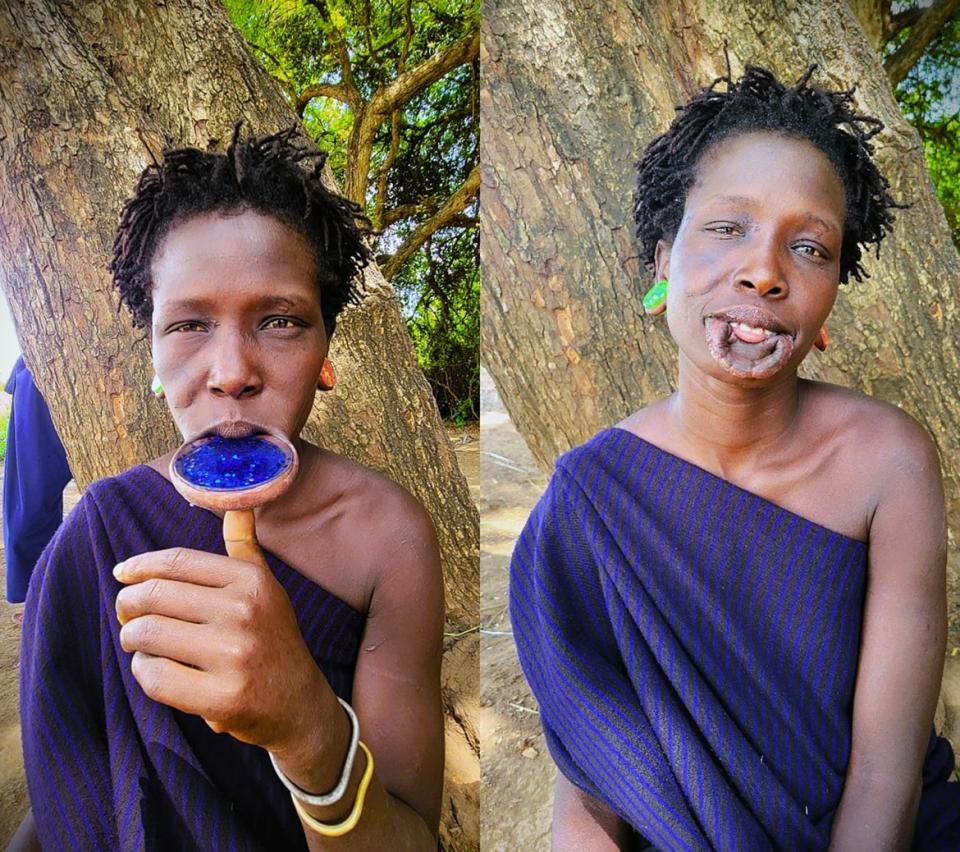
A Mursi woman poses for a portrait with her lip plate both in and out.
Here the Mursi oblige them, gathering around as tourists hop down from their Land Cruisers with cameras in hand, ready to capture a glimpse of this “most violent” and “dangerous” tribe they’ve only heard about or seen in magazines.
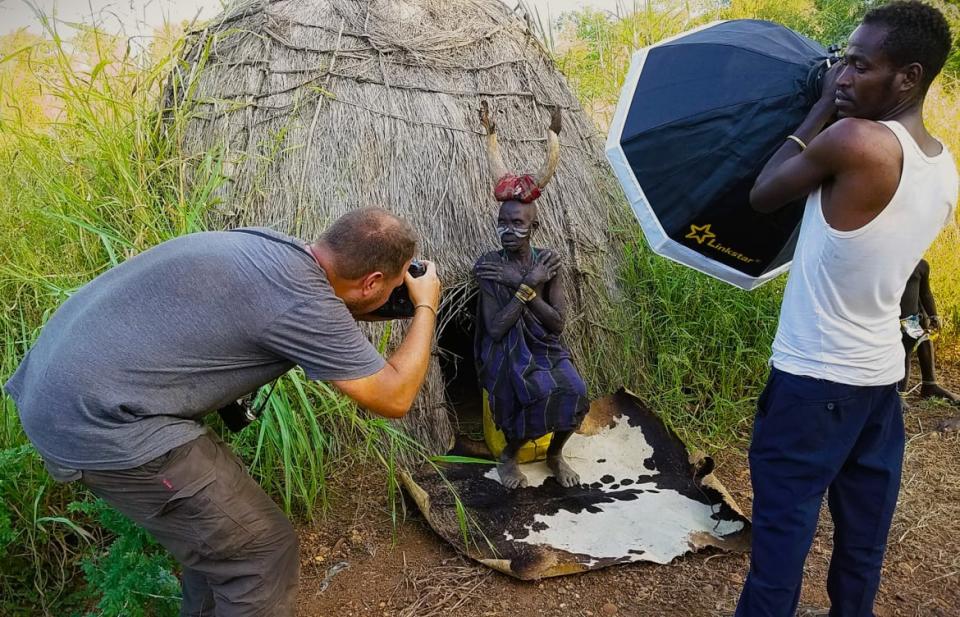
A Mursi elder dresses in exotic garb and poses for a photographer.
The women know to have their lip plates firmly emplaced before the tourists arrive, but they also go a step further. Members of the Mursi will paint their faces and then place upon their heads cow horns and bells bound by leather straps, beaded necklaces, fruit-bearing vines, and other trinkets used to stand out in a sort of competitive performance art to look the most exotic. The guides have already explained that the Mursi expect a tip for each photo, and the Mursi have learned that with each snapshot, tourists will pay.
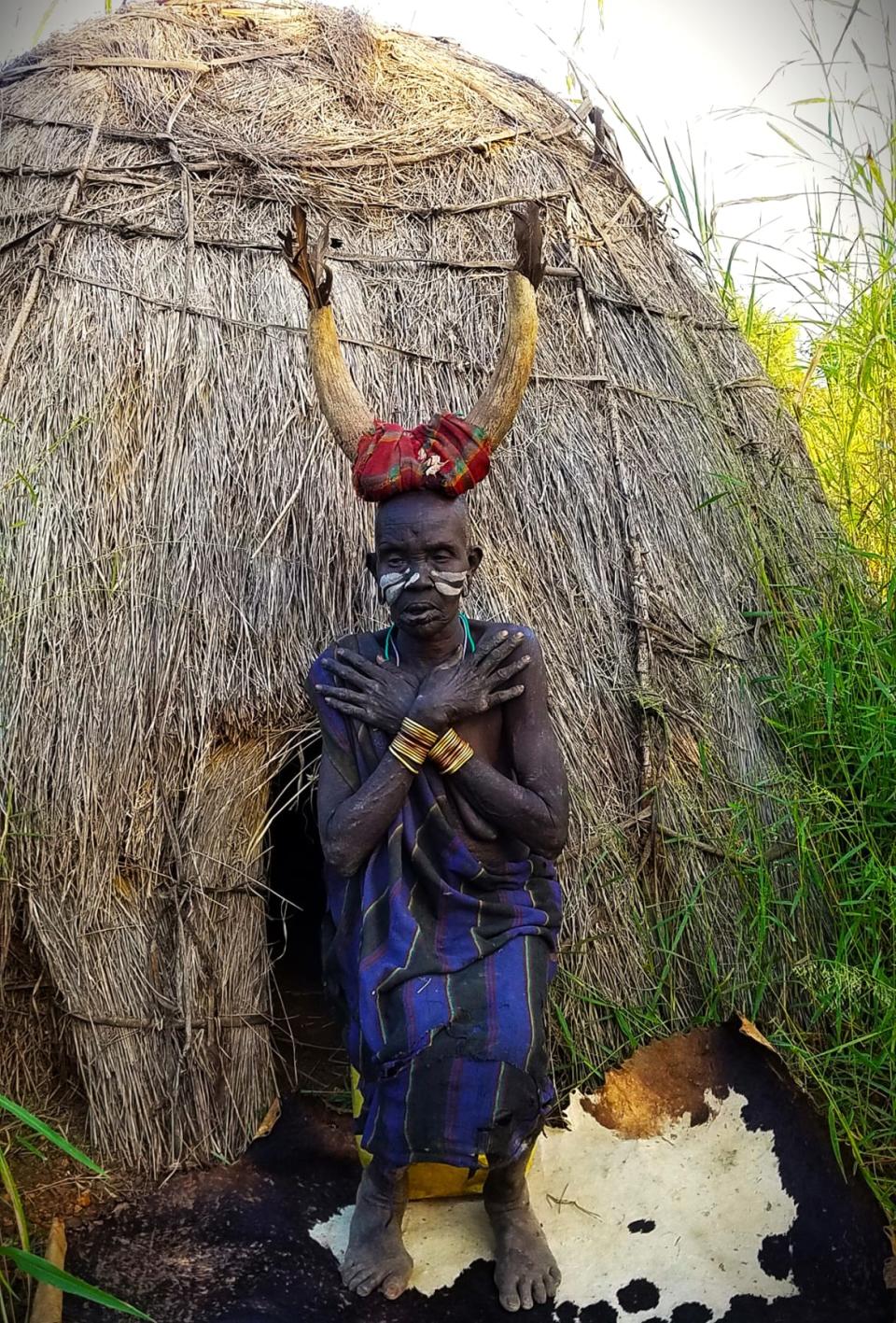
A Mursi elder dresses in exotic garb and poses for a photographer.
During times of hardship, particularly when there’s a drought or lack of tourism to Ethiopia from the pandemic, interactions can become somewhat aggressive as members of the Mursi fight to optimize sales from unknowing tourists. This aggression deters otherwise paying visitors from staying at these sites for too long, ensuing in a cycle in which the Mursi must compete amongst each other (resulting in more elaborate headgear) and rush the vehicles that pull up to these roadside villages.
After a photo session, Mursi women will attempt to sell unused, painted lip plates and training gauges made from clay. Tourists are generally happy to pay, but some visitors believe they are experiencing authentic Mursi life, full of desperate tribespeople seeking to sell their images or lip gauges in exchange for a few birr (the currency of Ethiopia).
There’s a lot at play here. While lip plate gauges are absolutely a staple of Mursi culture, they are not worn at home unless there is a Mursi-specific ceremony or celebration. The truth is that the Mursi do not dress this way when they’re at home and when no visitors are around.
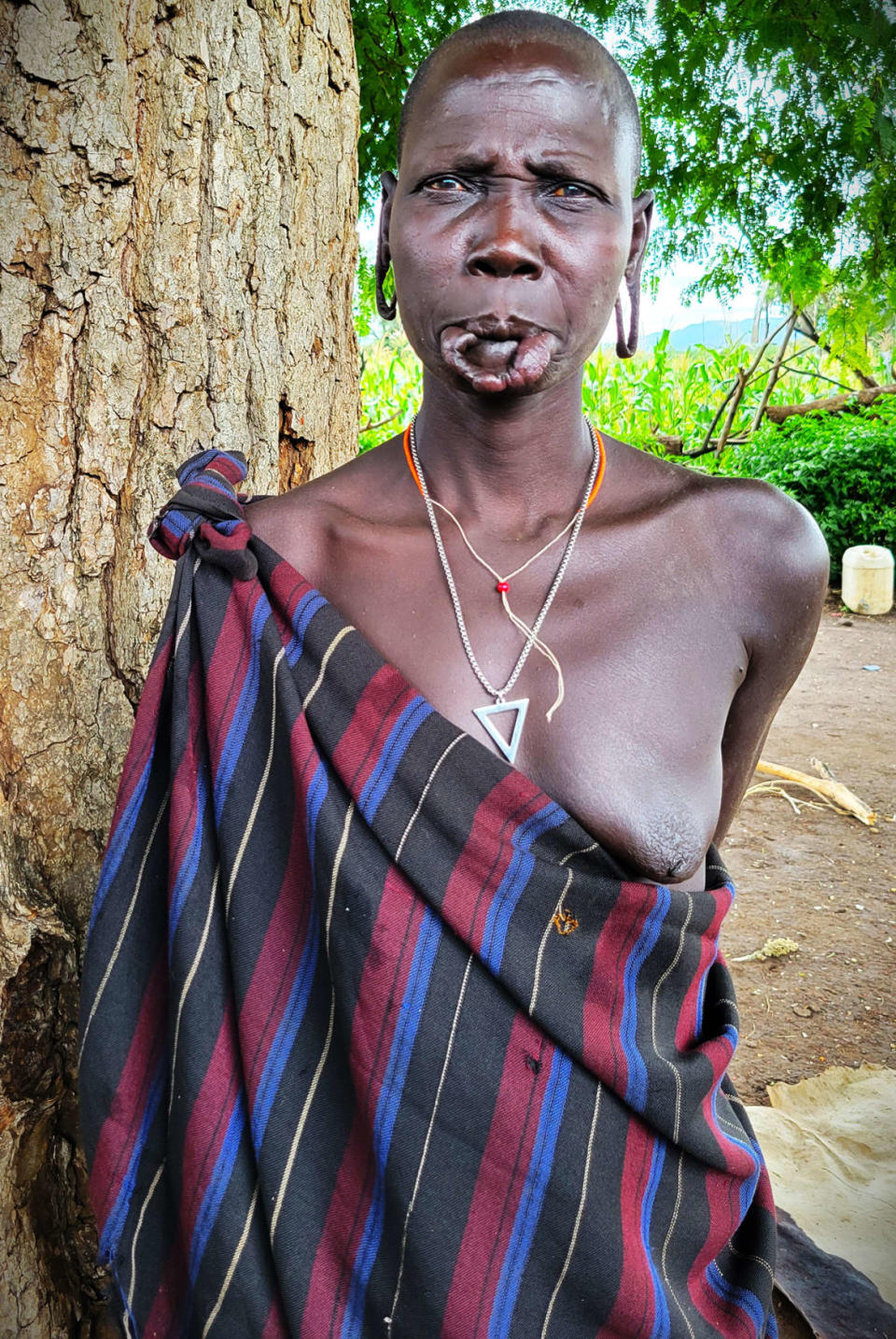
A Mursi woman poses for a portrait without her lip plate.
They do not wear cattle horns or elaborate face paint when preparing food or tending to their children. These decorative headdresses are not even used in their private ceremonies. And there are hundreds of Mursi people living miles from these outposts who neither know nor care about foreign visitors.
Over the years, the Mursi have learned that if they participate in this sort of gimmick, tourists will give them money. They can then afford things they cannot harvest or manufacture themselves, like medicine, specialized tools, and weapons and ammunition.
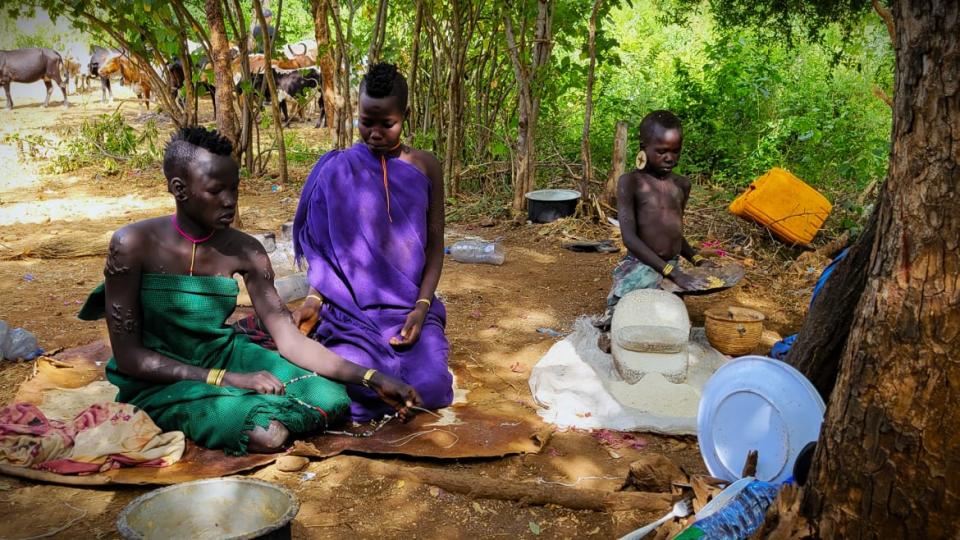
Mursi girls making beads and chatting in their natural home.
The money collected by the Mursi at the “front of the house” is dispersed through the immediate community, used to purchase items needed in the face of agricultural decline or drought.
Much of this money never reaches the heart of a community that numbers approximately 11,000 people. The majority of the members of this group live deep in the Ethiopian bush, busy raising cattle, growing fields of sorghum, and practicing donga fighting.
There’s a litany of travel magazines with glossy images of the Mursi smiling with exotic horns, bones, and foliage hanging from their heads, ears, and around their necks. But all of these photos were taken at a tourist village subtly operating like a roadside attraction. So if you ever find your way to Mursi land, just know there’s more to the story—but you have to go deep into the Mursi land to find the truth.
Get the Daily Beast's biggest scoops and scandals delivered right to your inbox. Sign up now.
Stay informed and gain unlimited access to the Daily Beast's unmatched reporting. Subscribe now.

 Yahoo News
Yahoo News 
